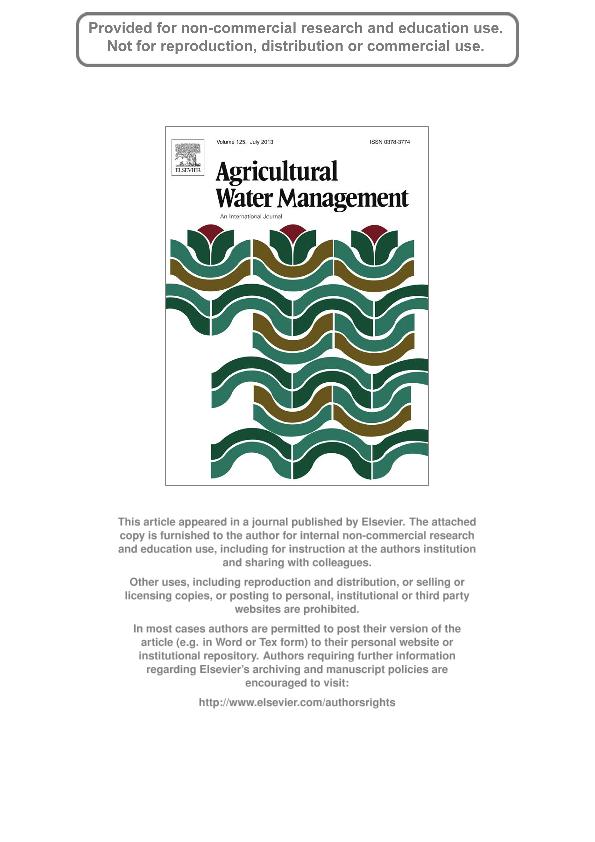Artículo
Water relations, biochemical - physiological and yield responses ofolive trees (Olea europaea L. cvs. Arbequina and Manzanilla) underdrought stress during the pre-flowering and flowering period
Fecha de publicación:
10/05/2013
Editorial:
Elsevier Science
Revista:
Agricultural Water Management
ISSN:
0378-3774
Idioma:
Inglés
Tipo de recurso:
Artículo publicado
Clasificación temática:
Resumen
In arid and semiarid regions from Argentina, where the main olive production areas are located, evapotranspiration is high and rainfall is minimal during winter and spring months, as compared with the Mediterranean region where winter rainfall precludes the need of irrigation in such period. The aim of the work was to study water relations, biochemical–physiological and yield responses of olive trees (Olea europaea L., Arbequina and Manzanilla cultivars) under different drought stress levels applied during the pre-flowering–flowering period. Increasing levels of water deficit affected plant water relations as measured by pronounced drops of stem water potentials (near −4.0 MPa) in treatments with severe water deprivation at the end of the flowering period. Deficit irrigation was associated with some leaf-level biochemical-physiological responses (accumulation of osmotically active substances, increased concentration of high molecular weight hydrocarbons and cuticle thickening), which can be interpreted as adaptation mechanisms of olive to water deficit. Water stress was also associated with increased lipid peroxidation and decreased levels of photosynthetic pigments, stomatal conductance and photosynthetic rate. During the first crop year analyzed, a significant decrease in fruit set and fruit yield was observed in treatments under water deprivation. Also, all treatments evaluated showed strong drops in fruiting and yield parameters during the second crop year suggesting a marked bearing pattern for both olive cultivars. From a practical standpoint, little irrigation (50% ETc) may be sufficient to maintain adequate plant water potentials for the coldest winter months, but high (75% ETc) or full (100% ETc) irrigation rates could be needed by mid-August (approximately 2 months before flowering) to avoid detrimental effects of water stress on biochemical–physiological and yield parameters of olive trees cultivated in areas with dry winter-spring season.
Archivos asociados
Licencia
Identificadores
Colecciones
Articulos(CCT - MENDOZA)
Articulos de CTRO.CIENTIFICO TECNOL.CONICET - MENDOZA
Articulos de CTRO.CIENTIFICO TECNOL.CONICET - MENDOZA
Articulos(IMBIV)
Articulos de INST.MULTIDISCIPL.DE BIOLOGIA VEGETAL (P)
Articulos de INST.MULTIDISCIPL.DE BIOLOGIA VEGETAL (P)
Articulos(SEDE CENTRAL)
Articulos de SEDE CENTRAL
Articulos de SEDE CENTRAL
Citación
Pierantozzi, Pierluigi; Torres, Myriam Mariela; Bodoira, Romina Mariana; Maestri, Damian; Water relations, biochemical - physiological and yield responses ofolive trees (Olea europaea L. cvs. Arbequina and Manzanilla) underdrought stress during the pre-flowering and flowering period; Elsevier Science; Agricultural Water Management; 125; 10-5-2013; 13-25
Compartir
Altmétricas




